Do you love the old world, naturally-aged wood finishes from Restoration Hardware and Pottery Barn? You know the pieces they’ve re-created with layers of stains and made them look like a perfectly worn table that’s lasted centuries. Re-creating a naturally-aged finish is one of my specialities. Would you like to learn how?
Before I begin and since I’m worried I may be jumping 10 steps ahead, let me show you a few samples of the result I’m planning to achieve. First, two sideboards…
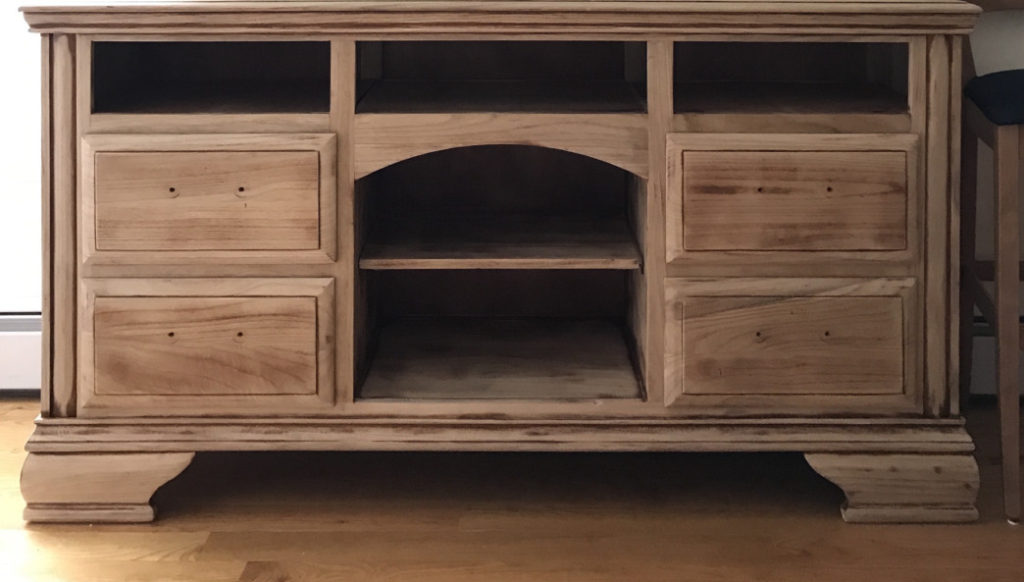
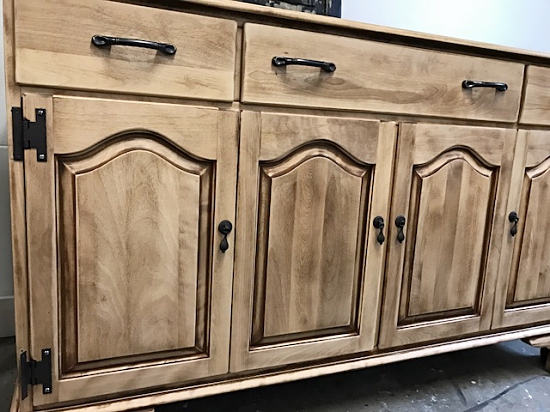
Next a dining table…
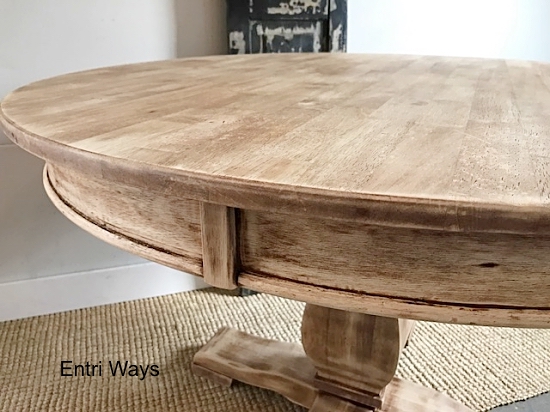
Each of these pieces started off coated in brown stain. They were damaged with scratches and dents, but I knew underneath all of that there was amazing wood that I wanted to make beautiful again.
So I worked with the brown stain and imperfections rather than against it, sanded back the stain, and achieved this incredible finish that looks naturally aged.
Always begin with wood. Woods with very smooth grain and no knots, like maple, work best for this refinishing technique. Stay away from woods like oak and pine. The table should be solid wood. Veneers wouldn’t be able to withstand the amount of sanding required.

This particular table was made of several small planks of wood then clear-coated. When the clear coat was sanded back, you could see the many variations in the wood grain. The more variations in the gain, the more difficult the refinishing technique becomes, but still possible.

The idea of this technique is to make the table look as if the stain has naturally worn away over many years. With other tables and sideboard on which I’ve used this sanding technique, I’ve always started off with a stained piece of furniture. However, as you can see, this table was lacking any stain color. Which means the stain had to be added back onto the wood.

Beware your eyes! This step is not pretty. You can actually see the spots where I missed sanding off the clear coat. I actually sanded this back a second time and re-applied the stain in an even coat.

The table leaf on the right shows how the even coat of stain actually looked. Once dry, then the real sanding technique began (as you can see on the table leaf on the left).

The next few photos show the finished table. If you’d like the specific details how to create this naturally-aged finish, please download the complete ebook which takes you step-by-step through this sanding technique: (click the image)
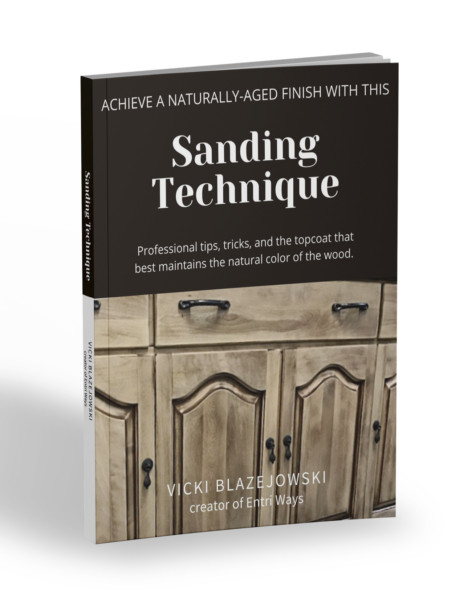
The ebook also tells you the my favorite topcoat for this finish. A clear coat that maintains the integrity of the wood, the original color, and the matte sheen.







Can’t you imagine this table withstanding another 50 years and beyond and only getting better with age?!
Don’t forget to grab the ebook while it’s only $7.00!

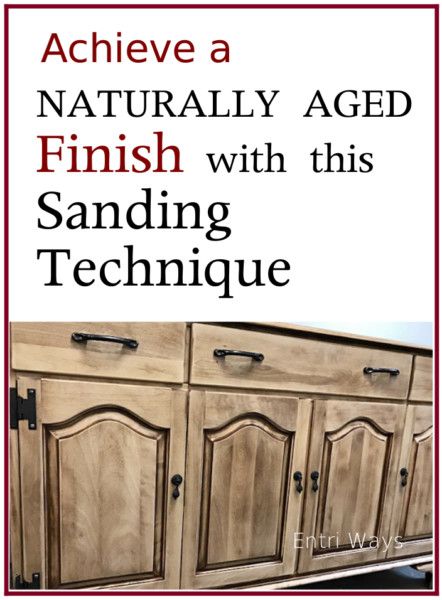

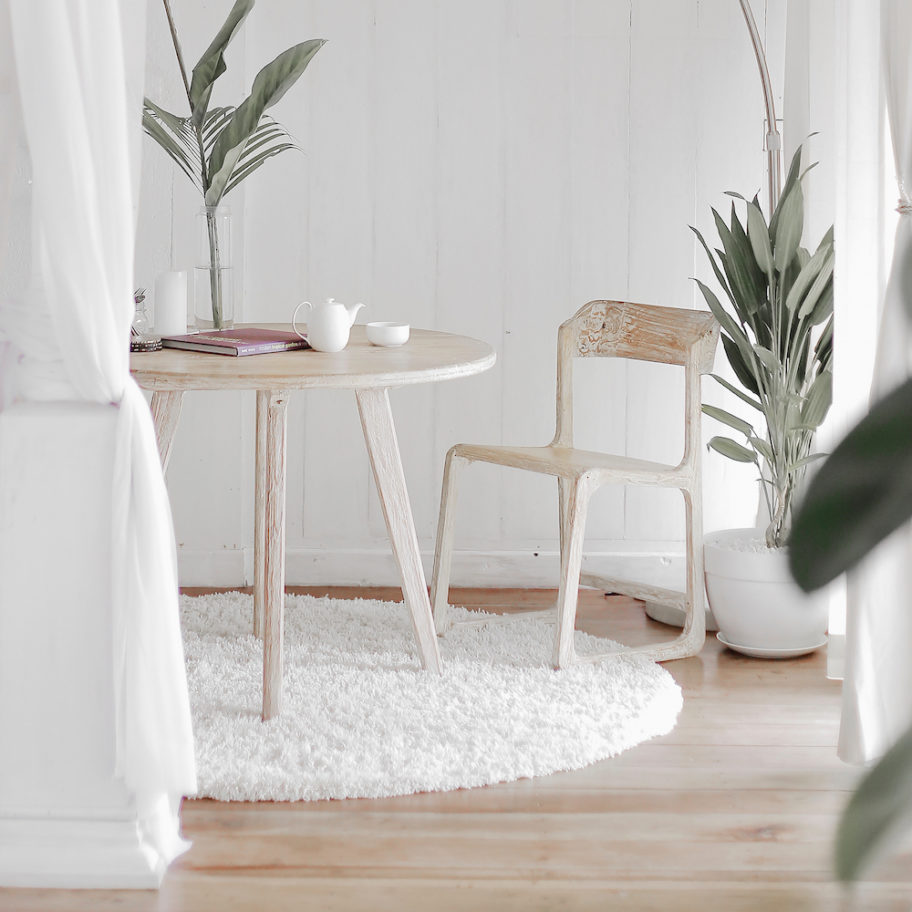

What a pretty technique. I have a kitten table that needs a makeover this spring but it’s not solid wood. I would have loved to use this technique.
Thank you Pamela. Yes, this technique requires a solid wood surface. Since your table is not real wood, consider creating a faux wood look by layering paints and stains.
You can do this if the table is real wood veneer, which is likely the case, as most are. I’ve done it many, many times in my furniture refurbishing business. Tables with the faux wood look that are made from formica and other non-wood types are the ones you cannot do this to. Just take care not to sand too deep or you risk sanding through the wood veneer. But since this project does not call for complete sanding of the stain, you should be good to go 😉
I’ve accidentally sanded through many sheets of wood veneer so be very careful if the table is not solid wood. Please share a picture of your finished work here. I would love to see it!
What’s wrong with using it on oak/pine?
You could do this with oak and pine, but oak has lot of wood grain and pine has many knots so they would give different look.
I have a similar table as shown here. Would like to use ur technique. Can you pls tell me what stain and what color stain u have used here before sanding ?
Minwax Honey